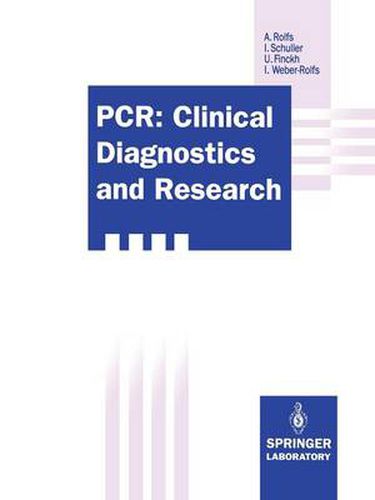Readings Newsletter
Become a Readings Member to make your shopping experience even easier.
Sign in or sign up for free!
You’re not far away from qualifying for FREE standard shipping within Australia
You’ve qualified for FREE standard shipping within Australia
The cart is loading…






This title is printed to order. This book may have been self-published. If so, we cannot guarantee the quality of the content. In the main most books will have gone through the editing process however some may not. We therefore suggest that you be aware of this before ordering this book. If in doubt check either the author or publisher’s details as we are unable to accept any returns unless they are faulty. Please contact us if you have any questions.
In 1985, Kary Mullis was driving late at night through the flowering buckeye to the ancient California redwood forest, cogitating upon new ways to sequence DNA. Instead he came upon a way to double the number of specific DNA modules, and to repeat the process essentially indefinitely. 1 He thought of using two oligonucleotide sequences, oppositely oriented, and a DNA polymerase enzyme, to double the number of DNA targets. Each product would thene become the target for the next reaction, effectively yielding a product which doubled in quantity with each repeated cycle. Like the chain reaction leading to nuclear fission, with each cycle event each initial reactant (neutron or DNA molecule) yields two similar products, each of which can serve as the initial reactant. The invention of this exponentially increasing amplification system quickly became known as the polymerase chain reaction (PCR). The tremendous sensitivity of PCR ultimately resides in the necessity for each of two specific oligonucleotide annealing reactions to occur at the same time in the proper orientation. The DNA annealing reaction is a very specific reaction. Single genes have been detected by hybridization of a DNA probe to chromosome preparations together with sensitive fluorescence microscopy. This is the equivalent to detecting a gene present in a single copy per cell genome. It is the combination of two such specific annealing reactions which makes possible the amplification needed to detect a single molecule with a specific DNA sequence in over 100,000 cell genomes.
$9.00 standard shipping within Australia
FREE standard shipping within Australia for orders over $100.00
Express & International shipping calculated at checkout
This title is printed to order. This book may have been self-published. If so, we cannot guarantee the quality of the content. In the main most books will have gone through the editing process however some may not. We therefore suggest that you be aware of this before ordering this book. If in doubt check either the author or publisher’s details as we are unable to accept any returns unless they are faulty. Please contact us if you have any questions.
In 1985, Kary Mullis was driving late at night through the flowering buckeye to the ancient California redwood forest, cogitating upon new ways to sequence DNA. Instead he came upon a way to double the number of specific DNA modules, and to repeat the process essentially indefinitely. 1 He thought of using two oligonucleotide sequences, oppositely oriented, and a DNA polymerase enzyme, to double the number of DNA targets. Each product would thene become the target for the next reaction, effectively yielding a product which doubled in quantity with each repeated cycle. Like the chain reaction leading to nuclear fission, with each cycle event each initial reactant (neutron or DNA molecule) yields two similar products, each of which can serve as the initial reactant. The invention of this exponentially increasing amplification system quickly became known as the polymerase chain reaction (PCR). The tremendous sensitivity of PCR ultimately resides in the necessity for each of two specific oligonucleotide annealing reactions to occur at the same time in the proper orientation. The DNA annealing reaction is a very specific reaction. Single genes have been detected by hybridization of a DNA probe to chromosome preparations together with sensitive fluorescence microscopy. This is the equivalent to detecting a gene present in a single copy per cell genome. It is the combination of two such specific annealing reactions which makes possible the amplification needed to detect a single molecule with a specific DNA sequence in over 100,000 cell genomes.